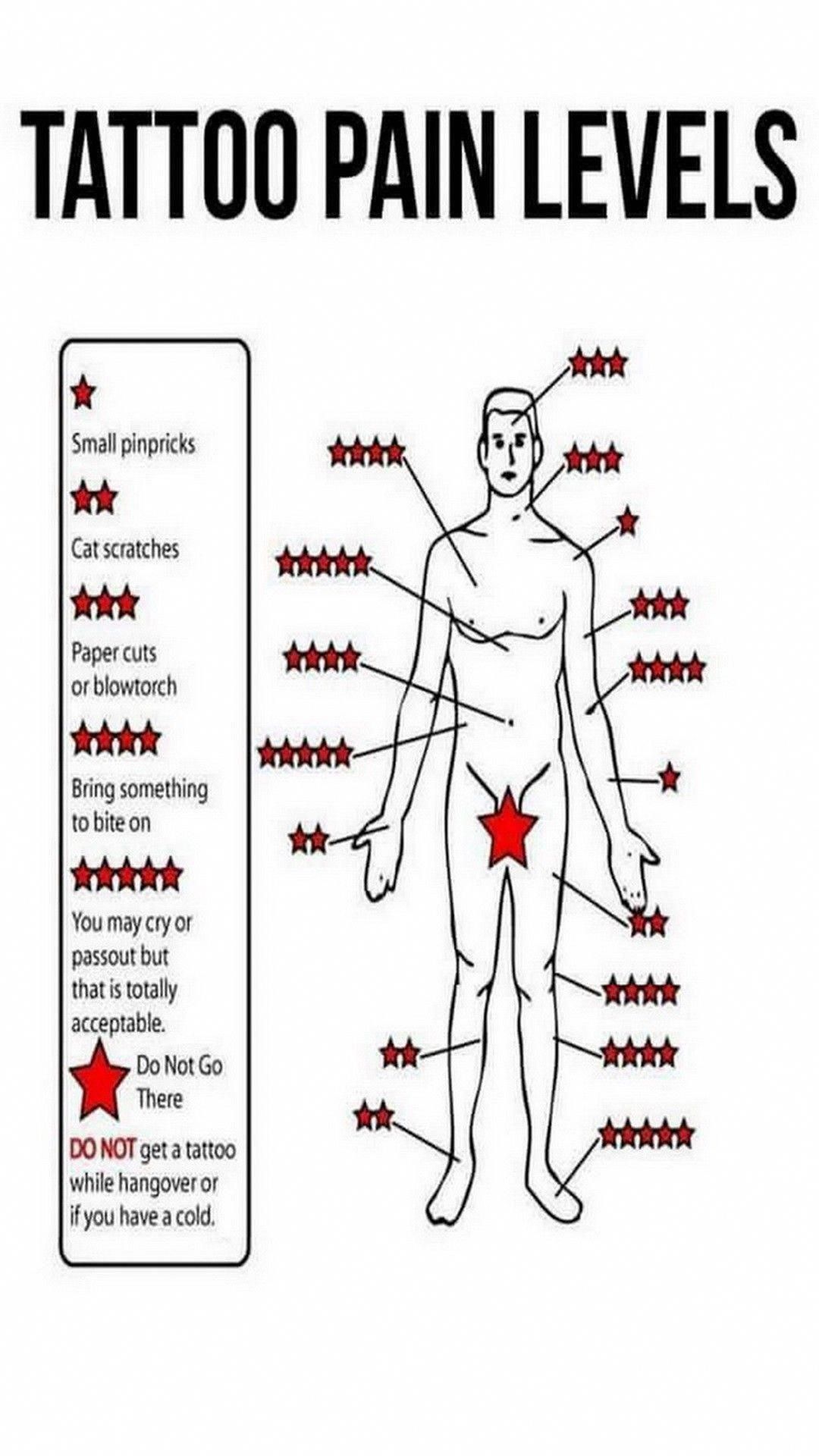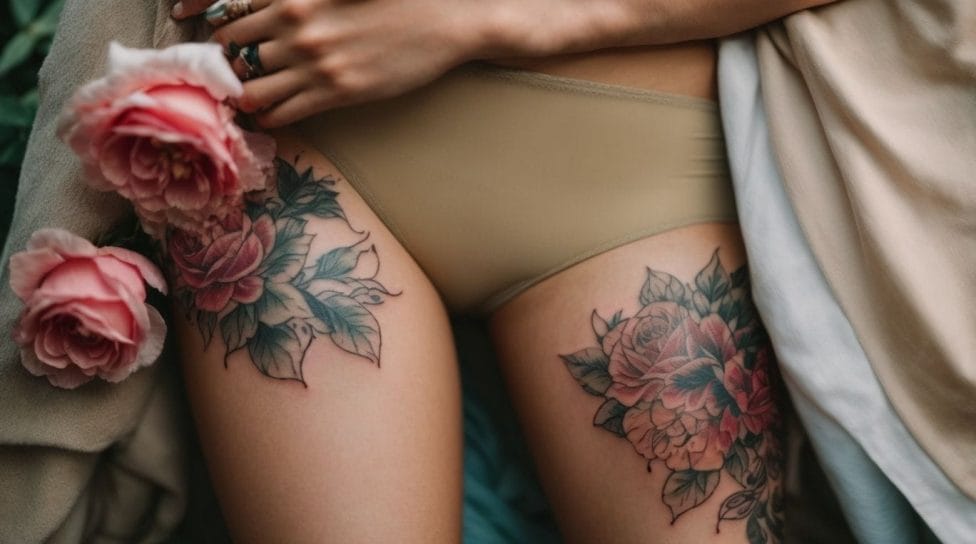When considering body art, one of the most common questions that arises is whether certain tattoo placements are more painful than others. Thigh tattoos, in particular, often spark curiosity and concern among those interested in getting inked. This article aims to provide an in-depth exploration of the pain associated with thigh tattoos, offering a comprehensive understanding of the factors that influence the tattooing experience.
Understanding the Thigh Tattoo Experience

The sensation of pain during a tattoo session is highly subjective and can vary greatly from person to person. Several factors contribute to the overall experience, including the individual’s pain tolerance, the artist’s technique, and the specific area being tattooed. Thigh tattoos, in particular, present a unique set of considerations due to the anatomical structure of the leg and its proximity to sensitive areas.
Anatomical Factors and Pain Perception
The human thigh is a complex muscular structure, composed of various layers of muscle, fat, and connective tissue. These layers provide a certain level of cushioning, which can impact the perception of pain during the tattooing process. The thickness of the skin and the density of the underlying muscle groups play a significant role in determining the level of discomfort an individual may experience.
Additionally, the proximity of the thigh to sensitive areas, such as the groin and inner thigh, can influence the pain threshold. These areas are generally more sensitive and may require a lighter touch or specific tattooing techniques to minimize discomfort.
The Role of Nerve Endings
Nerve endings are another crucial factor in the pain perception associated with thigh tattoos. The leg, including the thigh, is richly innervated with sensory nerves. These nerves transmit pain signals to the brain, resulting in the sensation of discomfort. The density and distribution of these nerve endings can vary across different individuals, leading to varying pain experiences during the tattooing process.
| Nerve Sensitivity Areas | Pain Perception |
|---|---|
| Inner Thigh | High Sensitivity |
| Front of Thigh | Moderate Sensitivity |
| Outer Thigh | Lower Sensitivity |

It's important to note that while the above table provides a general guideline, individual experiences may differ. Factors such as personal pain tolerance, previous tattoo experiences, and the complexity of the tattoo design can further influence the overall pain perception.
Managing Pain During the Tattoo Process

Understanding the potential challenges associated with thigh tattoos is the first step in managing pain effectively. Here are some strategies and considerations to enhance your comfort during the tattooing process:
Choosing the Right Tattoo Artist
Selecting a skilled and experienced tattoo artist is crucial for a comfortable and successful tattoo experience. Look for artists who have a proven track record of creating beautiful thigh tattoos and who prioritize client comfort. An artist who understands the unique challenges of thigh tattoos can employ specific techniques to minimize discomfort.
Tattoo Design and Placement
The design and placement of your thigh tattoo can significantly impact the level of pain you may experience. Smaller, simpler designs may be less painful compared to intricate, detailed pieces. Additionally, the placement of the tattoo can make a difference. For instance, tattoos on the outer thigh may be less painful than those on the inner thigh or groin area.
Pain Management Techniques
There are several techniques and strategies that can help manage pain during the tattoo process:
-
Topical Numbing Creams: Applying a topical anesthetic cream before the tattoo session can help reduce pain. However, it's essential to consult with your artist and follow their recommendations, as some creams may affect the tattooing process.
-
Breathing Techniques: Deep, controlled breathing can help manage pain and anxiety during the tattooing process. Focus on slow, steady breaths to relax your body and mind.
-
Distraction: Bringing a friend or engaging in activities like listening to music or watching a video can help distract your mind from the sensation of pain.
-
Regular Breaks: Ask your artist for regular breaks during the tattoo session. Taking short pauses can help you relax and gather your strength for the next session.
Post-Tattoo Care and Pain Management
Proper post-tattoo care is essential not only for the healing process but also for managing any residual pain or discomfort. Here are some key considerations:
Aftercare Instructions
Follow your tattoo artist’s aftercare instructions meticulously. Proper care during the healing process can minimize discomfort and promote faster healing. Common aftercare practices include keeping the tattoo clean, applying ointments or creams as directed, and avoiding activities that may irritate the tattooed area.
Managing Inflammation and Itching
Itching and inflammation are normal parts of the healing process. To manage these sensations:
-
Avoid Scratching: Resist the urge to scratch your tattoo, as this can slow down the healing process and increase the risk of infection.
-
Cold Compresses: Applying cold compresses can help reduce inflammation and soothe any itching. Be sure to follow the instructions provided by your tattoo artist.
-
Ointments and Creams: Use the recommended ointments or creams to keep the tattooed area moisturized and soothe any discomfort.
Addressing Painful Areas
If you experience persistent pain or discomfort in specific areas of your thigh tattoo, consult with your tattoo artist or a healthcare professional. They can provide guidance on managing pain and ensuring a smooth healing process.
Thigh Tattoo Testimonials
To gain a more personal perspective on the thigh tattoo experience, we reached out to individuals who have undergone this journey. Here’s what they had to say:
Sarah’s Story
“I was initially nervous about getting a thigh tattoo, but my artist was amazing. She explained the process thoroughly and used a gentle touch, which made the experience much more comfortable than I anticipated. The inner thigh area was a bit more sensitive, but overall, it was a manageable pain level.”
David’s Experience
“My thigh tattoo was a large piece, and I was prepared for some discomfort. The outer thigh area was surprisingly comfortable, but the front of my thigh was a bit more challenging. My artist took regular breaks, which helped me relax and manage the pain. It was definitely an intense experience, but the end result was worth it!”
Conclusion: Embracing the Thigh Tattoo Journey

Thigh tattoos can be a beautiful and meaningful expression of personal style, but the concern about pain is valid. By understanding the factors that influence pain perception and employing effective pain management strategies, you can embark on your thigh tattoo journey with confidence. Remember, every individual’s experience is unique, and with the right preparation and support from your tattoo artist, you can create a masterpiece that you’ll cherish for years to come.
How long does the pain last during a thigh tattoo session?
+The duration of pain during a thigh tattoo session can vary depending on several factors, including the size and complexity of the tattoo, your pain tolerance, and the artist’s technique. Generally, the pain is most intense during the initial stages of the tattooing process and gradually diminishes as the session progresses. However, some residual discomfort may be felt for a short period after the session.
Can I use painkillers to manage the pain during the tattoo process?
+While painkillers may provide temporary relief, it’s important to consult with your tattoo artist and healthcare professional before taking any medication. Some painkillers can thin the blood, which may affect the tattooing process and increase the risk of bleeding. It’s generally recommended to avoid painkillers unless specifically advised by a medical professional.
Are thigh tattoos more painful for women than men?
+The perception of pain during a thigh tattoo session is highly individual and can vary regardless of gender. While some women may find thigh tattoos more sensitive due to the proximity to sensitive areas, it’s important to remember that pain tolerance and sensitivity can differ greatly from person to person. Factors such as individual anatomy, pain threshold, and previous tattoo experiences play a more significant role than gender.